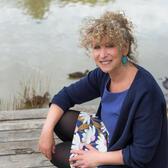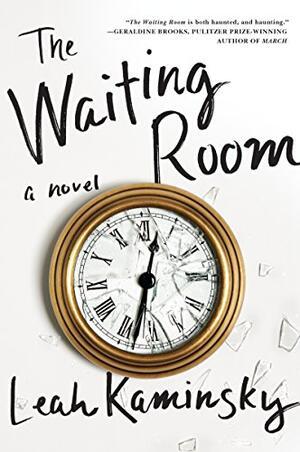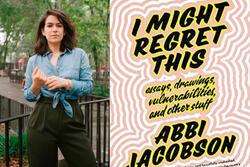Leah Kaminsky On Her Book "The Waiting Room"
We spend our lives waiting for life to happen. We wait to get through school, land a terrific job, find a perfect partner, maybe have kids. We’re never done waiting for all the things we dream will materialize. It took me ten years to write my debut novel, The Waiting Room, but the truth is I’ve been waiting my whole life to write it, gathering together snippets and stories that would eventually end up weaving themselves into a book.
Originally, I set out to write a biography of my mother, who at 18 was interred in Bergen Belsen, the concentration camp from which she emerged at the end of the war as a sole survivor from her entire family. In 1949, she traveled to Australia, to get as far away as possible from Europe. When I finally started trying to write her story after she died, I only managed to fill 3 pages of my notebook, unable to recall much of what she had told me. I had spent my teenage years trying to avoid listening to my mother’s horrific tales, wishing instead that I had been born “unstoried.” Writing The Waiting Room was a way to create a “what if” about my mother—to bear witness to the story she had taken to her grave. I was only 21 when she died, but I had waited too long to ask my questions. My imagined answers urgently pushed my pen forward. The novel is fictional, but the ink on the page of my manuscript bled from my heart.
The novel is centered on the idea of waiting; it straddles three continents and several decades as the story travels between dark, war-torn Europe, 1950s Australia, and the Israeli coastal town of Haifa during the second Intifada. The protagonist, Dina Ronen, is a young doctor who has drifted from relationship to relationship throughout her life, waiting to find someone who might love her enough to understand the trauma she carries in her very cells. One afternoon, after a visit to a medical conference in Israel, Dina crashes headfirst into the handsome Eitan at the local Haifa swimming pool. Together, they dive into the murky depths of love. Dina leaves the comfort of her peaceful town of Melbourne, which after World war II became home to the largest number of Holocaust survivors outside of Israel, to join Eitan and make a new life together on the other side of the world. But her mother won’t leave her alone, although she died years earlier. Being dead hasn’t stopped her from haunting her daughter—“Jewish mothers never die”, she says. She appears as a ghostly presence whenever she is least expected, or wanted. Dina’s mother is a metaphorical ghost who is waiting for Dina to bear witness to the heritage and legacy she has run from her whole life.
The action of The Waiting Room takes place on one day, twenty-four hours in which Dina’s life will change forever, as she is confronted by the very things she fears. She has a six-year-old son, Shlomi, and is heavily pregnant with her second child on the day a news broadcaster warns of an imminent terror attack in her hometown of Haifa. Up until then, the city had been regarded as a model of co-existence, an oasis of peace in the Middle East. The novel interweaves the present-day narrative and the challenges Dina faces living in a country whose history has been shaped by war, with memories she holds of her mother’s life. Like many children of Holocaust survivors, Dina harbors a cursed imagination, readily bringing the dead back to life in her mind. Alice Nelson wrote in her perceptive review of The Waiting Room, that the novel “takes as its impossible project the redemption of the dead—or at the very least their preservation in the pages of literature. In the Jewish tradition to commemorate is a holy act, memory a sacred and unbreakable conduit between the lost and the living andThe Waiting Room, ranging elegantly across decades and continents, is haunted by the ghosts of the dead.”
At its very core, my book is about honouring of the dead, and the past, at both an individual and collective level. Dina’s mother is determined to haunt her daughter until she is willing to bear witness to the history she has found too painful to face. She is the spectral embodiment of an eternal Jewish mother, with the power to nag her daughter even from beyond the grave. Although the book doesn’t shy away from darkness, it is light and laughter that enable its most powerful voice. Trauma is passed down through generations, but so is love. As Dina’s mother reminds her, “love is more ferocious than terror.”
The Waiting Room is one of JWA's 2018-2019 Book List picks. Leah Kaminsky’s new novel, The Hollow Bones, comes out on March 6th.







